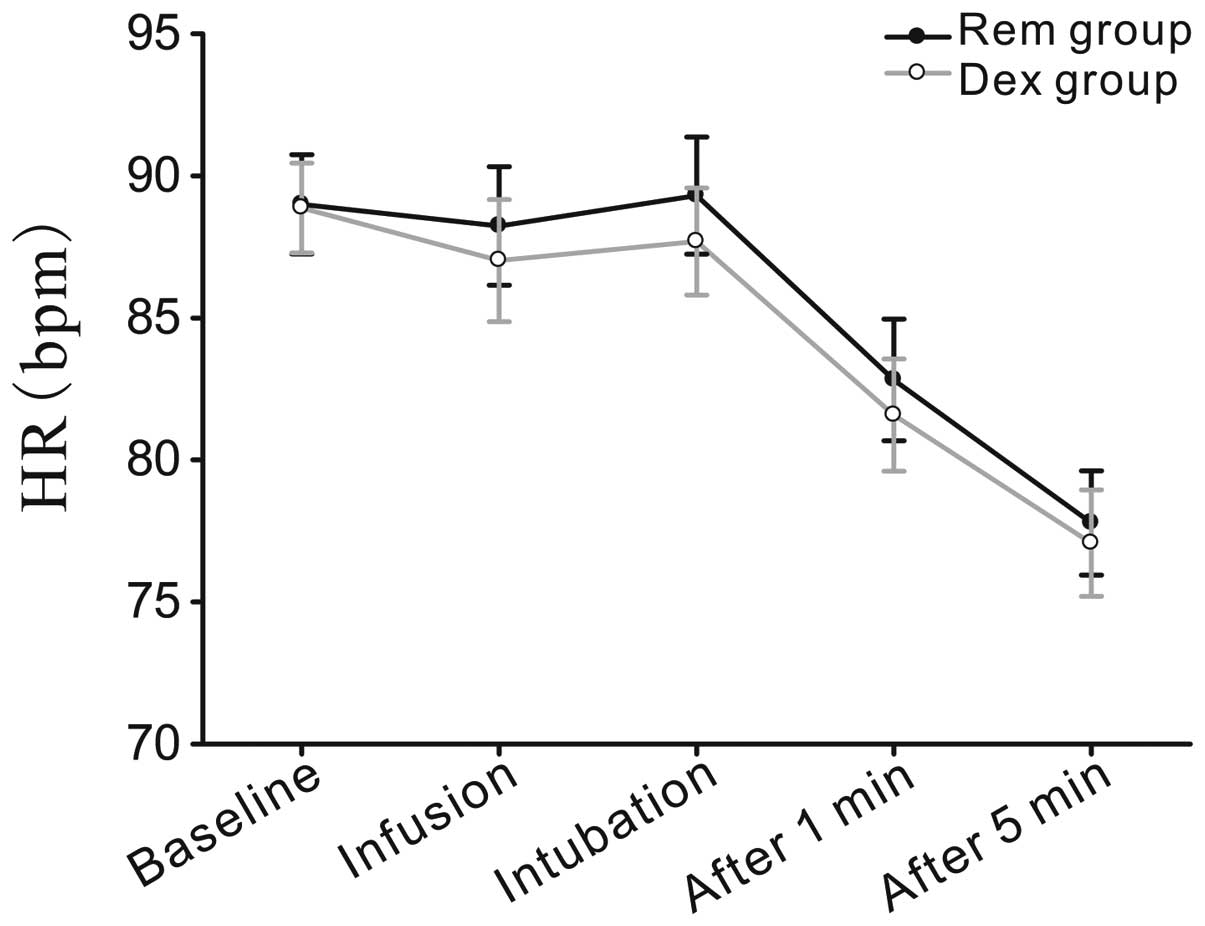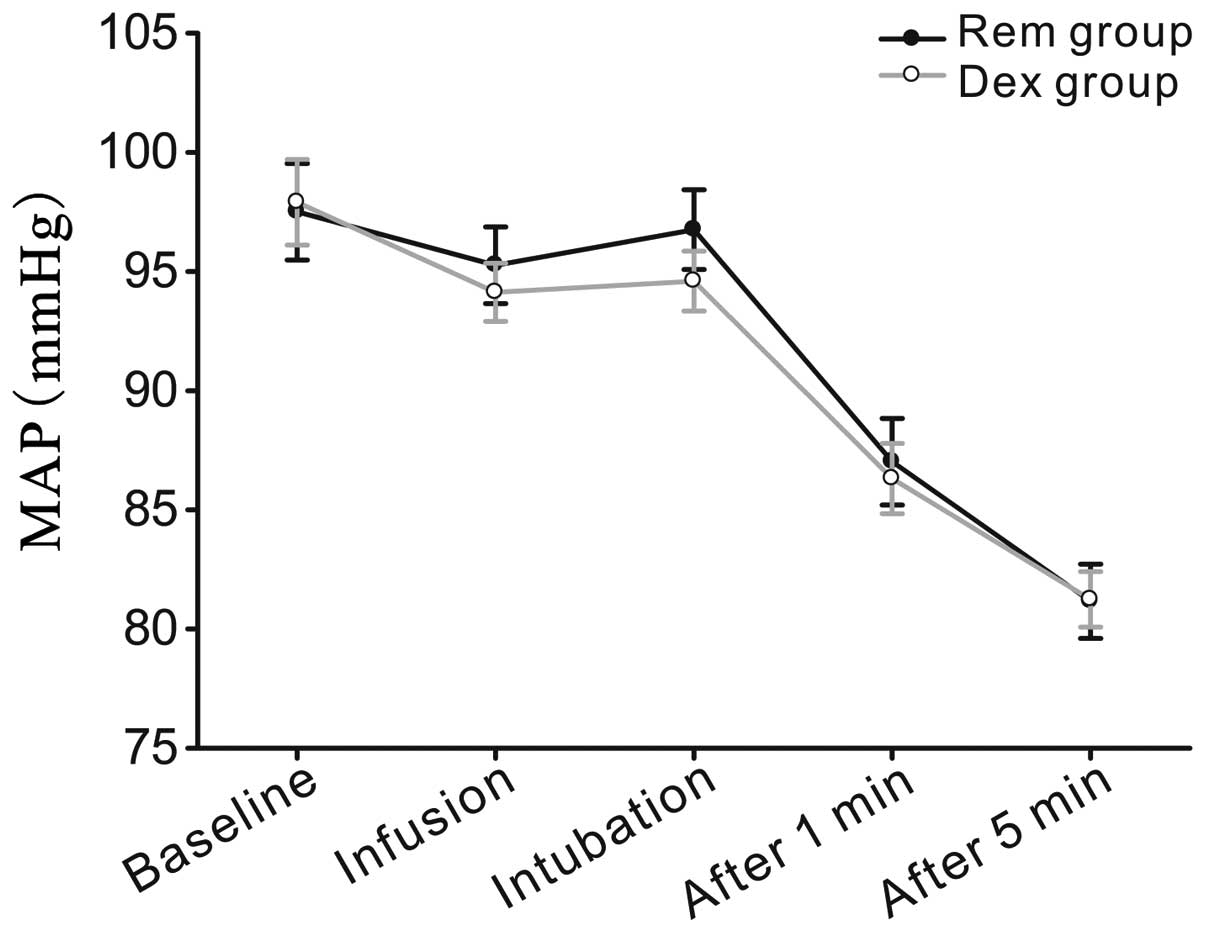|
1
|
Cafiero T, Esposito F, Fraioli G, et al:
Remifentanil-TCI and propofol-TCI for conscious sedation during
fibreoptic intubation in the acromegalic patient. Eur J
Anaesthesiol. 25:670–674. 2008. View Article : Google Scholar : PubMed/NCBI
|
|
2
|
Péan D, Floch H, Beliard C, et al:
Propofol versus sevoflurane for fiberoptic intubation under
spontaneous breathing anesthesia in patients difficult to intubate.
Minerva Anestesiol. 76:780–786. 2010.PubMed/NCBI
|
|
3
|
Lallo A, Billard V and Bourgain JL: A
comparison of propofol and remifentanil target-controlled infusions
to facilitate fiberoptic nasotracheal intubation. Anesth Analg.
108:852–857. 2009. View Article : Google Scholar : PubMed/NCBI
|
|
4
|
Boehm CA, Carney EL, Tallarida RJ, et al:
Midazolam enhances the analgesic properties of dexmedetomidine in
the rat. Vet Anaesth Analg. 37:550–556. 2010. View Article : Google Scholar : PubMed/NCBI
|
|
5
|
Belda I, Cubas MG, Rivas E, et al:
Remifentanil target controlled infusion (TCI) vs ketamine or
ketamine in combination with remifentanil TCI for conscious
sedation in awake fiberoptic intubation: A randomized controlled
trial: 19AP1-5. Eur J Anaesthesiol. 28:2262011. View Article : Google Scholar
|
|
6
|
Bürkle H, Dunbar S and Van Aken H:
Remifentanil: a novel, short acting, mu-opoid. Anesth Analg.
83:646–651. 1996.
|
|
7
|
Bergese SD, Khabiri B, Roberts WD, et al:
Dexmedetomidine for conscious sedation in difficult awake
fiberoptic intubation cases. J Clin Anesth. 19:141–144. 2007.
View Article : Google Scholar : PubMed/NCBI
|
|
8
|
Madhere M, Vangura D and Saidov A:
Dexmedetomidine as sole agent for awake fiberoptic intubation in a
patient with local anesthetic allergy. J Anesth. 25:592–594. 2011.
View Article : Google Scholar : PubMed/NCBI
|
|
9
|
Hu R, Liu JX and Jiang H: Dexmedetomidine
versus remifentanil sedation during awake fiberoptic nasotracheal
intubation: a double-blinded randomized controlled trial. J Anesth.
27:211–217. 2013. View Article : Google Scholar
|
|
10
|
Chu KS, Wang FY, Hsu HT, et al: The
effectiveness of dexmedetomidine infusion for sedating oral cancer
patients undergoing awake fibreoptic nasal intubation. Eur J
Anaesthesiol. 27:36–40. 2010. View Article : Google Scholar
|
|
11
|
Xue FS, Liu HP, He N, et al:
Spray-as-you-go airway topical anesthesia in patients with a
difficult airway: a randomized, double-blind comparison of 2% and
4% lidocaine. Anesth Analg. 108:536–543. 2009. View Article : Google Scholar : PubMed/NCBI
|
|
12
|
Webb AR, Fernando SS, Dalton HR, et al:
Local anaesthesia for fibreoptic bronchoscopy: transcricoid
injection or the ‘spray as you go’ technique? Thorax. 45:474–477.
1990. View Article : Google Scholar : PubMed/NCBI
|
|
13
|
el-Ganzouri AR, McCarthy RJ, Tuman KJ, et
al: Preoperative airway assessment: predictive value of a
multivariate risk index. Anesth Analg. 82:1197–1204.
1996.PubMed/NCBI
|
|
14
|
Kundra P, Kutralam S and Ravishankar M:
Local anaesthesia for awake fibreoptic nasotracheal intubation.
Acta Anaesthesiol Scand. 44:511–516. 2000. View Article : Google Scholar : PubMed/NCBI
|
|
15
|
Sanchez A, Iyer RR and Morrison DE:
Preparation of the patient for awake intubation. Benumof’s Airway
Management; Principles and Practice. Hagberg CA: 2nd edition.
Mosby-Year Book, Inc; St. Louis, MO: pp. 263–277. 2007
|
|
16
|
Vennila R, Hall A, Ali M, et al:
Remifentanil as single agent to facilitate awake fibreoptic
intubation in the absence of premedication. Anesthesia. 66:368–372.
2011. View Article : Google Scholar
|
|
17
|
Jaakola ML, Ali-Melkkilä T, Kanto J, et
al: Dexmedetomidine reduces intraocular pressure, intubation
responses and anaesthetic requirements in patients undergoing
ophthalmic surgery. Br J Anaesth. 68:570–575. 1992. View Article : Google Scholar : PubMed/NCBI
|
|
18
|
Venn RM, Bradshaw CJ, Spencer R, et al:
Preliminary UK experience of dexmedetomidine, a novelagent for
postoperative sedation in the intensive care unit. Anaesthesia.
54:1136–1142. 1999. View Article : Google Scholar : PubMed/NCBI
|
|
19
|
Cattano D, Lam NC, Ferrario L, et al:
Dexmedetomidine versus remifentanil for sedation during awake
fiberoptic intubation. Anesthesiol Res Pract.
2012:7531072012.PubMed/NCBI
|
|
20
|
Scher CS and Gitlin MC: Dexmedetomidine
and low-dose ketamine provide adequate sedation for awake
fibreoptic intubation. Can J Anaesth. 50:607–610. 2003. View Article : Google Scholar : PubMed/NCBI
|
|
21
|
Bloor BC, Ward DS, Belleville JP and Maze
M: Effects of intravenous dexmedetomidine in humans. II Hemodynamic
changes. Anesthesiology. 77:1134–1142. 1992. View Article : Google Scholar : PubMed/NCBI
|
|
22
|
Ebert TJ, Hall JE, Barney JA, et al: The
effects of increasing plasma concentrations of dexmedetomidine in
humans. Anesthesiology. 93:382–394. 2000. View Article : Google Scholar : PubMed/NCBI
|

















